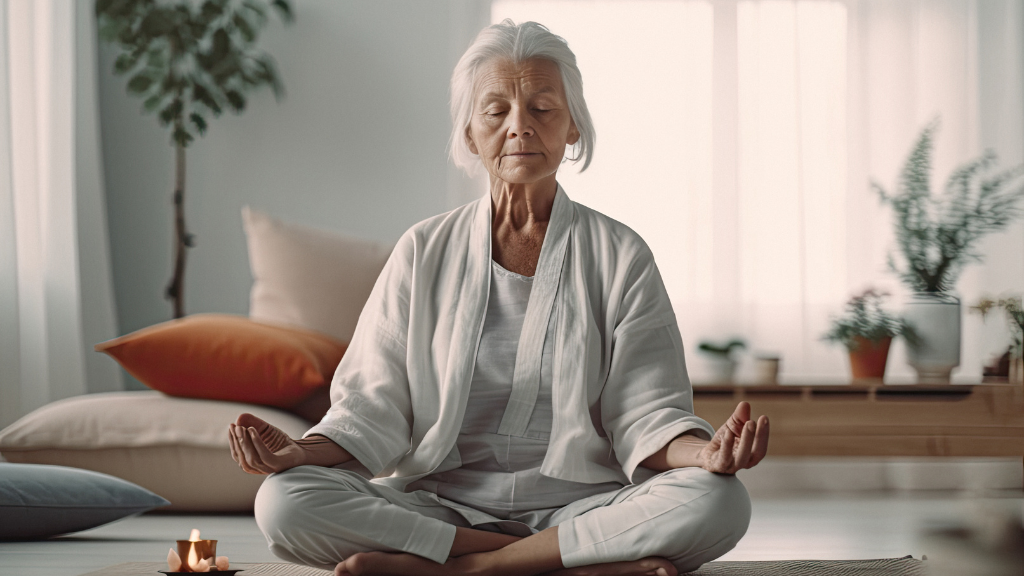Did you know that Leading Edge Senior Care has a Dementia Support Group? We meet monthly in Mesa. For more details <click here>
The Best In-Home Stroke Recovery Exercises
The Best In-Home Stroke Recovery Exercises
Navigating the path of stroke recovery requires a comprehensive approach that includes physical, emotional, and cognitive aspects. In-home stroke recovery exercises play a pivotal role in this journey, offering a range of benefits that extend beyond physical rehabilitation. Let’s delve deeper into the details of some of the best in-home stroke recovery exercises that can facilitate a holistic recovery process.
1. Seated Marching:
This exercise not only promotes blood circulation but also aids in rebuilding muscle strength and coordination. By gently lifting one leg at a time while seated, stroke survivors can engage their lower body muscles and improve flexibility. This exercise is particularly useful for those who may have limited mobility or balance issues in the early stages of recovery.
2. Arm Raises:
Raising your arms above your head and then lowering them might seem simple, but it serves as an effective way to regain upper body mobility and strength. This motion targets the shoulder muscles, helping survivors restore their range of motion and improve their ability to perform daily activities independently.
3. Finger Stretching:
Fine motor skills are often affected after a stroke, and finger stretching exercises provide a focused approach to regain dexterity. By repeatedly opening and closing their fingers, stroke survivors can improve hand coordination, which is essential for tasks like buttoning shirts, holding utensils, or using electronic devices.
4. Leg Extensions:
Sitting down, stroke survivors can work on leg strength and balance by extending one leg forward and holding it for a few seconds. This exercise contributes to improved mobility and stability, making walking and standing more manageable over time.
5. Wall Push-Ups:
For those who are eager to regain upper body strength but need support, wall push-ups offer a safe option. By standing facing a wall and gently pushing against it, stroke survivors engage their chest, arm, and shoulder muscles. This exercise can help rebuild strength without the risk of strain.
6. Heel-To-Toe Walk:
Walking may be challenging initially, but practicing the heel-to-toe walk can contribute to better balance and gait. By placing the heel of one foot directly in front of the toes of the other with each step, survivors work on their balance and coordination, leading to a smoother walking pattern.
7. Chair Squats:
Chair squats provide an effective way to rebuild leg strength while also aiding in maintaining the ability to rise from a seated position. Using a sturdy chair for support, stroke survivors can practice sitting and standing back up, strengthening their lower body muscles and increasing overall mobility.
8. Finger-to-Nose Touch:
This exercise focuses on hand-eye coordination, a crucial skill for daily tasks. By extending their arm and touching their nose with their index finger, stroke survivors enhance their ability to perform precise movements, which is particularly important for activities like grooming and eating.
9. Ankle Rotations:
Even small joints like ankles benefit from rehabilitation exercises. Gently rotating the ankles in both directions helps maintain flexibility and prevent stiffness, contributing to overall mobility and reducing the risk of falls.
10. Deep Breathing:
While physical exercises are crucial, emotional well-being is equally important. Deep breathing exercises provide a moment of relaxation and mindfulness. By taking slow, deliberate breaths, stroke survivors can reduce stress, manage anxiety, and enhance their overall sense of calm.
11. Pelvic Tilts:
Maintaining core strength is vital for overall stability and posture. Pelvic tilts involve gently tilting the pelvis upward and then downward while lying on the back. This exercise strengthens core muscles and supports good posture, which is essential for maintaining balance and preventing strain.
12. Bridge Pose:
The bridge pose is an excellent exercise for strengthening the core, glutes, and lower back muscles. By lifting the hips off the ground while lying on the back with knees bent and feet flat, stroke survivors can engage these muscle groups, contributing to better posture and overall strength.
13. Modified Plank:
Engaging the core and upper body muscles without causing strain can be achieved through modified plank exercises. Using a chair or countertop for support, survivors can assume a plank position with their forearms on the surface. This exercise promotes stability and supports the gradual rebuilding of strength.
14. Neck Stretches:
Stress and tension can manifest in the neck area, affecting overall comfort. Gently tilting the head to each side and forward provides a simple yet effective way to release tension, reduce stiffness, and promote relaxation in the neck muscles.
15. Visual Tracking:
Visual tracking exercises enhance eye movement control and coordination, which are essential for various activities. Practicing these exercises by focusing on an object as it’s moved horizontally and vertically contributes to improved visual skills and overall spatial awareness.
16. Puzzle Solving:
While physical exercises are important, cognitive stimulation should not be overlooked. Engaging in puzzles or games that challenge cognitive skills can be highly beneficial. Mental exercises support brain health and cognitive function, contributing to a holistic recovery process.
17. Singing or Speech Practice:
Strengthening vocal cords and improving speech is crucial for effective communication. Engaging in singing or speech exercises, under the guidance of a speech therapist if needed, can aid in enhancing vocal strength and clarity.
18. Meditation and Relaxation:
Incorporating meditation and relaxation techniques into the routine can significantly contribute to emotional well-being. Stroke survivors can find solace in these practices, reducing stress, promoting positive emotions, and enhancing overall mental resilience.
Conclusion:
By integrating these exercises into their daily routine, stroke survivors can create a comprehensive rehabilitation plan that addresses the physical, emotional, and cognitive aspects of recovery. It’s important to approach these exercises with patience and persistence, as gradual progress is the key to a successful recovery journey. Additionally, consulting with caregivers including physical therapists and occupational therapists, is essential to ensure that exercises are appropriate and safe for individual needs and conditions.

